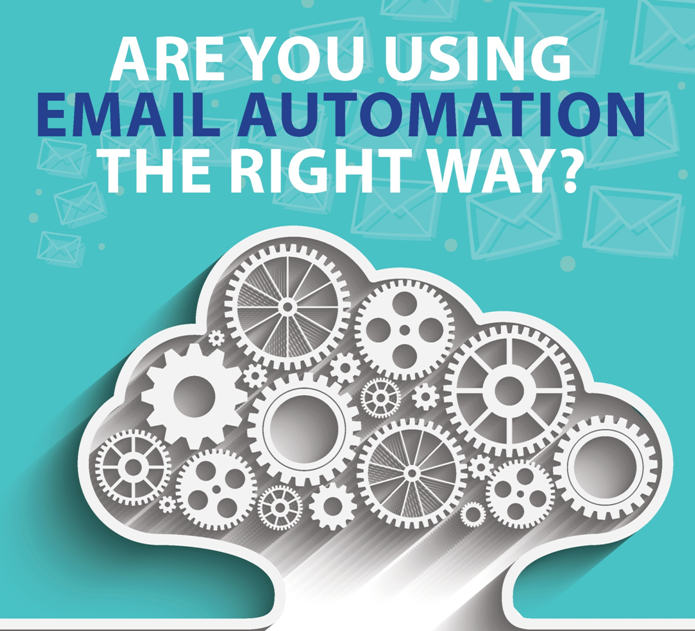
You’re probably familiar with email automation. Many local businesses use autoresponder software to send out newsletters and marketing emails.
But…
Are you doing it the right way?
Email automation is a tool, but like any tool, it’s only useful if you know how to use it. You won’t get far if all you’re doing is sending an occasional email.
Imagine someone trying to nail two boards together with the wrong side of a hammer, or use a power saw without turning it on. They wouldn’t get very far, right?
The same is true of email marketing. So, with that in mind, let’s talk about some of the RIGHT ways to use email marketing for your local business.

The people who visit your blog or website may have some things in common with one another, but their interests likely diverge in other areas.
Why is that important?
Well, you don’t want to waste money sending marketing emails to people who aren’t interested in what they say. That’s the most important thing.
If you’re currently sending identical content to everyone on your list, you’re missing out an opportunity to improve the experience of your subscribers and grow your business at the same time.
For example, say you own a store that sells clothing for both women and children. Some of the people who are on your list might be interested only in women’s clothing – and there’s no point in sending them email content that’s aimed at people who buy kids’ clothing.
The answer is to segment your email list. There are many ways to do it, but here are just a few:
- If a lead opts in through an ad for a product or service, send them content that’s relevant to what they expressed interest in
- Likewise, people who buy from you can be segmented based on their purchase history
- You can also ask people to self-segment by choosing the topics they want to hear about
List segmentation ensures that your subscribers get content that’s custom-tailored to their needs – and that means fewer unread emails and more conversions!

It goes without saying that people who read your blog are interested in what you say. So why aren’t you using your blog to get their email addresses?
Few local businesses use this technique, but it’s an easy one to implement – and effective too.
All you need to do is add a subscribe button that allows blog readers to sign up to be notified whenever you post a new blog entry. Then, you can:
- Send them additional content that’s related to the topic of the blog post that got them to sign up
- Ask them what their other interests are
- Send them the offers that are most likely to entice them
The key is remembering that your blog should be a marketing and sales tool. The content you post there should always be relevant to your target audience and designed to attract people who are interested in your products and services.



When it comes to email marketing, timing is everything. An email that hits a subscriber’s inbox at the right time is far more effective than one that gets lost in the shuffle.
You might be wondering:
How can I possibly know what time a subscriber is likely to open my emails?
It’s easier than you might think.
You can use your customer’s profile to figure it out. Here are three ways to do it:
- Check their history to see what time they subscribed to your list
- Review their visits to your site to see when most of them have occurred
- Check to see when they open your emails and click on the links inside
Armed with that information, you can segment your list to send emails at the times when subscribers are most likely to open them. In other words, you won’t have to worry that your emails will get lost in the shuffle. They’ll be front and center when you need them to be.

You might have heard that it’s seven times more expensive to attract a new customer than it is to retain an existing one. In some cases, though, that statistic might be understating the truth. According to Harvard Business Review, the cost of winning a customer may be as much as 25 times that of keeping an old one.
That’s why it’s important to let your current customers know that you value them – and email marketing is one of the best ways to do it. For example:
- At the bare minimum, you should send an email of gratitude when a customer makes a purchase. It lets them know you don’t take their business for granted and creates good will that may lead to their next purchase.
- You may also consider sending them tips on how to get the most from their purchase. Someone who buys a kitchen product might love to get some guidance on surprising ways to use it or a delicious recipe to try.
- Creating sales and special events for existing customers is another way to show them that you value their business and want them to continue to buy from you.
The money you spend sending this type of customer-nurturing email is negligible – and the returns on your investment can be substantial. Happy customers are repeat customers, and as a bonus, they’re also likely to recommend your business to the people they know.
Email Marketing Is Great…
… but it’s only as effective as the effort you put into it. If all you’re doing is sending out boilerplate emails, then you might as well not bother.
Instead, do everything you can to flex your email marketing muscles. If you do, it can be one of the most effective – and most profitable – tools in your marketing arsenal.

